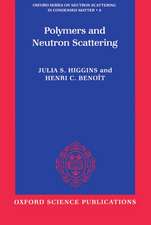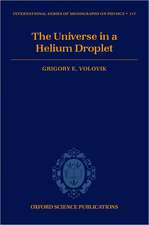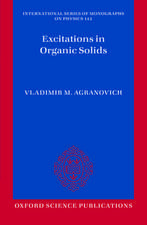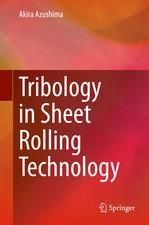Electronic Structure of Materials
Adrian P. Suttonen Limba Engleză Paperback – 30 sep 1993
Preț: 350.98 lei
Preț vechi: 484.30 lei
-28% Nou
Puncte Express: 526
Preț estimativ în valută:
67.18€ • 70.58$ • 56.46£
67.18€ • 70.58$ • 56.46£
Carte tipărită la comandă
Livrare economică 01-07 martie
Preluare comenzi: 021 569.72.76
Specificații
ISBN-13: 9780198517542
ISBN-10: 0198517548
Pagini: 276
Ilustrații: halftones, line drawings, tables
Dimensiuni: 155 x 233 x 17 mm
Greutate: 0.41 kg
Editura: Clarendon Press
Colecția Clarendon Press
Locul publicării:Oxford, United Kingdom
ISBN-10: 0198517548
Pagini: 276
Ilustrații: halftones, line drawings, tables
Dimensiuni: 155 x 233 x 17 mm
Greutate: 0.41 kg
Editura: Clarendon Press
Colecția Clarendon Press
Locul publicării:Oxford, United Kingdom
Recenzii
'the presentation is succinct ... and immensely enjoyable'Gyaneshwar Srivastava, University of Exeter, Physics World, April 1994
'Adrian Sutton has achieved a fresh insight into an old subject. Sutton certainly has managed to produce a useful slant to the study of solid materials, principally by concentrating on one aspect, namely electronic structure. I found the treatment novel and refrshing, especially because of the mix of simple and complex formalisms. The book is well written and interesting, and materials scientists and solid-state phsycists will find it most useful.'Times Higher Education Supplement
'This book is a giant step forward for teaching the electronic structure of solids in a way that is better related to the facts about materials that one wants to understand.'V. Heine, Cavendish Laboratory, Cambridge, Contemporary Physics 35
'The book will be of value to undergraduates in physics, chemistry and materials science.'Aslib Book Guide, vol. 59, no. 4, April 1994
Le livre est une tres bonne synthese des deux approches, et il en degage bien la complementarite. Les methodes de calcul modernes, a partir des premiers principes, sont introduites simplement, sans aucun developpement lourd, et illustrees par quelques exemples. Ce livre est a conseiller aux etudiants de maitrise et de DEA dans la specialite.
'Adrian Sutton has achieved a fresh insight into an old subject. Sutton certainly has managed to produce a useful slant to the study of solid materials, principally by concentrating on one aspect, namely electronic structure. I found the treatment novel and refrshing, especially because of the mix of simple and complex formalisms. The book is well written and interesting, and materials scientists and solid-state phsycists will find it most useful.'Times Higher Education Supplement
'This book is a giant step forward for teaching the electronic structure of solids in a way that is better related to the facts about materials that one wants to understand.'V. Heine, Cavendish Laboratory, Cambridge, Contemporary Physics 35
'The book will be of value to undergraduates in physics, chemistry and materials science.'Aslib Book Guide, vol. 59, no. 4, April 1994
Le livre est une tres bonne synthese des deux approches, et il en degage bien la complementarite. Les methodes de calcul modernes, a partir des premiers principes, sont introduites simplement, sans aucun developpement lourd, et illustrees par quelques exemples. Ce livre est a conseiller aux etudiants de maitrise et de DEA dans la specialite.
















